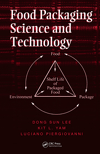Green Science Alliance Developed Rechargeable Aluminum Sulfur Battery Pouch Cell

SOURCE Green Science Alliance Co., Ltd.
Rechargeable batteries are an important electrical device because they can store electricity produced by sustainable renewable energy such as wind power, solar power, hydrogen, fuel cells, geothermal power, wave power and biomass power generation, etc. Therefore, it is necessary to create a rechargeable battery that can be stronger and cheaper than currently used lithium ion batteries.
Green Science Alliance has been developing various types of next-generation rechargeable battery technologies such as lithium sulfur battery, lithium rich cathode, silicon type anode, all solid state lithium ion battery, etc. Also, they have developed a rechargeable aluminum air battery in the past. However, due to its complicated structure and unstable aluminum reduction reaction of aluminum ion to aluminum metal in the electrolyte, it was difficult to achieve commercialization.
This time, Dr. Ryohei Mori and Mr. Hiromichi Itani have developed an actual aluminum sulfur battery pouch cell with aluminum anode, ionic liquid or deep eutectic solvent-based electrolyte and carbon-sulfur composite cathode. The cell capacity was approximately 950 mAhg-1 at the beginning, but deteriorated to 200 mAhg-1 after 100 cycles, under 0.025 C at room temperature. Therefore, cyclability needs to be improved. In addition, cell voltage and applied current are lower than that of a lithium ion battery. The open circuit voltage of the prepared aluminum sulfur battery pouch cell was approximately 0.9 V. Even still, cell capacity is much larger, especially at the beginning and an aluminum sulfur battery can be safer and cheaper than a lithium ion battery.
Looking for a reprint of this article?
From high-res PDFs to custom plaques, order your copy today!







